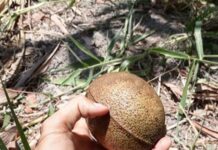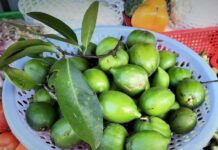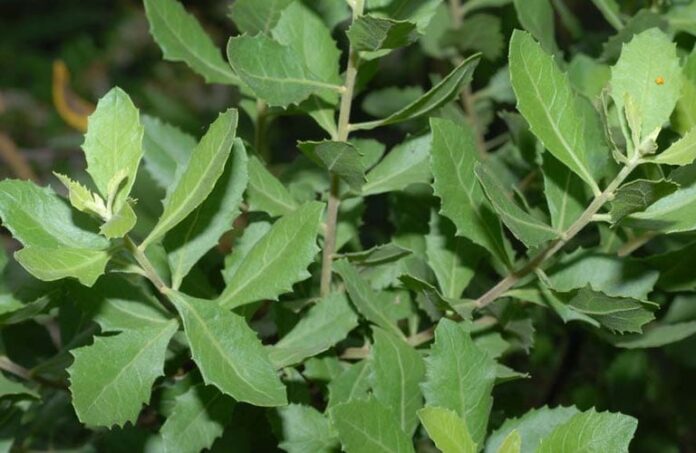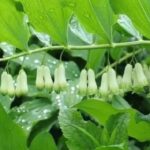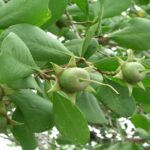The wild shrub, Pluchea indica, commonly known as cúc tần in Vietnam, is more than just a humble plant found along rural fences. With its scientific name derived from the Asteraceae family, this plant also goes by the names of đài bi, phật phà, and cây lức. Typically growing to heights between 1-2 meters, Pluchea indica has small branches covered in a soft, short layer of hair. Its leaves are a unique mix of green and grayish hues, with serrated edges, and they grow alternately, almost hugging the stem. The plant’s purple flowers bloom in small clusters at the tip of its branches, emitting a pleasant fragrance that fills the air.
In the past, cúc tần was a common sight in the Northern countryside of Vietnam, often found near ponds and moist soil or serving as natural fences around homes. However, with societal developments, the use of this plant for fencing has declined, making it a rare sight in modern times.
Unbeknownst to many, cúc tần used to be an integral part of rural cuisine. Its fresh, green tops can be prepared in a variety of mouthwatering dishes, such as boiling, stir-frying, making soup, wrapping sticky rice cakes, porridge, or braising with pig brains. One of the most iconic dishes is fish stewed with cúc tần, a true taste of home. Ms. Loan, a local from Thanh Hoa, reminisces, “To make stewed diếc fish with cúc tần, we usually line the bottom of the pot with a layer of cúc tần leaves, place the cleaned diếc fish on top, add seasonings like fermented bean paste, fish sauce, salt, and MSG, and then cover it with another layer of leaves. The stew is simmered until the broth reduces, infusing the fish with a delightful aroma and a perfect blend of flavors.”
Beyond its culinary delights, cúc tần is a treasure trove of nutrients, offering a wide range of health benefits. The fresh leaves contain a plethora of nutrients, including protid (5.7%), vitamin C (15mg), lipid (1%), carotene (4.6mg), fiber (5.1%), phosphorus (2.3%), ash (2.3%), calcium (197mg%), and iron (5mg). Additionally, the plant contains chlorogenic acid and natural essential oils, known to boost immunity and enhance overall health.
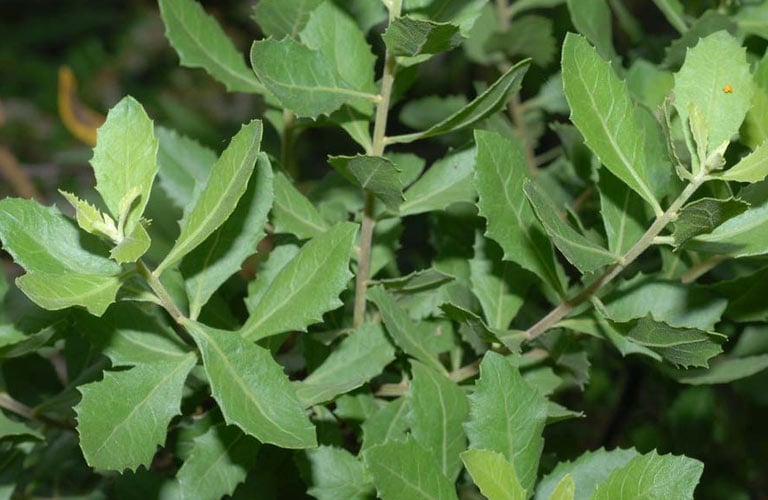
Cúc tần offers a plethora of health benefits in addition to its culinary uses.
Pluchea indica, or cúc tần, is not just a familiar plant in home gardens, but it also brings numerous health benefits. Here are some ways to use cúc tần to support the treatment of common health issues:
Relieving Cold-Induced Headaches: To fight a cold and alleviate headaches, boil two handfuls of cúc tần leaves with one handful each of lemongrass and lemon leaves. Drink the decoction or use it for steam inhalation. This method induces sweating, providing quick relief from cold symptoms and headaches.
Easing Lower Back Pain: For lower back pain or kidney discomfort, pound young cúc tần leaves and branches, mix with a small amount of alcohol, and heat. Apply this mixture to the affected area for 15-20 minutes daily for optimal results.
Promoting Wound Healing: Freshly pounded cúc tần leaves can be applied directly to wounds to reduce pain and accelerate healing. Alternatively, drink a decoction made from 20g cúc tần roots, 20g virgin roots, 20g grapefruit peel roots, 10g lion’s mane, and 10g licorice roots for five to seven days to boost recovery.
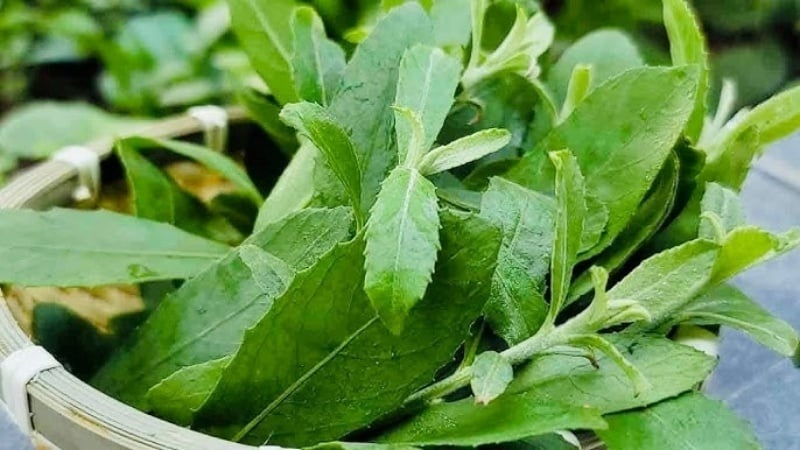
Freshly pounded cúc tần leaves can be applied to wounds to reduce pain and promote healing.
Reducing Stress and Fatigue: Cooking with cúc tần can help alleviate stress and fatigue. Prepare a dish with 50g cúc tần leaves, 50g torn white chrysanthemum flowers, 100g ripe papaya, and 100g pig brains. Boil all the ingredients in one liter of water, then add the pig brains and simmer for another 20 minutes. Consume this dish in two meals throughout the day, while it’s still hot, for one week.
Soothing Coughs from Tracheitis: Wash and chop three handfuls of mature cúc tần leaves, then cook them with two handfuls of rice, 50g minced pork, and 2-3 slices of fresh ginger to make a soothing porridge. Eat this porridge three times a day for three consecutive days to ease your cough.
Treating Sore Throat, Nasal Inflammation, and Cough: Combine equal parts of self-heal, cúc tần leaves, and purple quinces, adding a small amount of cold water (preferably rainwater). Boil the mixture and let children drink it in place of water several times a day. If the child has a high fever, add fish mint leaves to enhance the therapeutic effect.
Relieving Hemorrhoid Symptoms: To ease the discomfort of hemorrhoids, combine one small handful each of cúc tần leaves, fig leaves, piper lolot leaves, and mugwort leaves with a few slices of fresh turmeric. Wash the ingredients and boil them in just enough water until the liquid reduces. Use this decoction for a 15-minute sitz bath, followed by a 10-15 minute soak in the warm liquid. For best results, perform this treatment consistently 2-3 times a week.
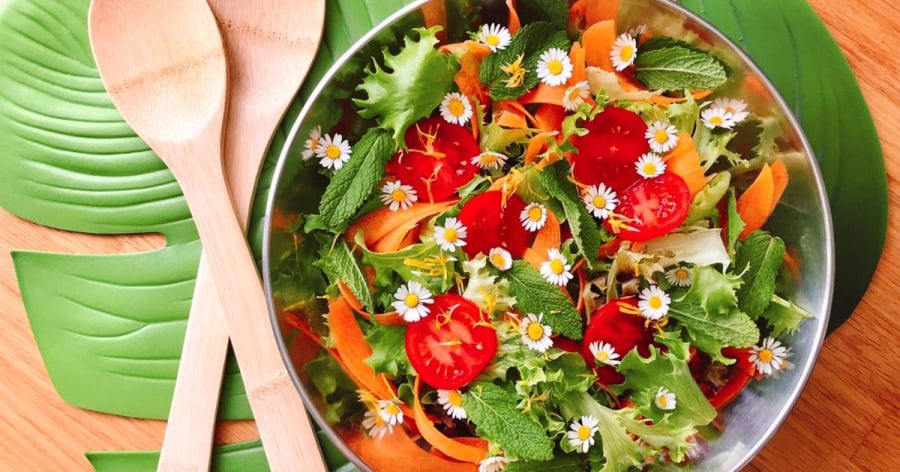
Relieve hemorrhoid symptoms by combining cúc tần leaves with other herbal leaves and fresh turmeric.
Rejuvenating the Body from Debility and Hematemesis: To improve debility or hematemesis, cut the stems, branches, and leaves of cúc tần into 2-centimeter pieces, totaling about 150g. Pound 20g of crab (cleaned and without the shell and gills) and mix with 30ml of water to extract the juice. Add half a teaspoon of salt to the crab juice and divide it into three portions to be consumed during the day (morning, noon, and evening). Continue this treatment for five consecutive days to notice significant improvement.
Managing Asthma: A simple remedy using cúc tần leaves can help alleviate asthma symptoms. Prepare a bunch of cúc tần leaves (similar in size to a bunch of water spinach), wash them, and soak them in diluted salt water for sanitation. Pound the leaves, add a bowl of filtered water, strain the liquid, and discard the pulp. Drink this liquid daily for 100 days to help reduce asthma symptoms.
The Familiar Vegetable in Vietnam, Once Only Fed to Pigs, Now Contains “Gold” in its Roots and Sells Like Hotcakes!
Introducing the ultimate delicacy for liquor aficionados – an exotic root steeped in tradition and packed with potent flavors. This prized root, meticulously cultivated and carefully selected, commands a premium price among connoisseurs. Immerse yourself in a sensory journey as you uncork the essence of this exquisite ingredient, meticulously transformed into a refined alcoholic beverage. Prepare to be captivated by its complex notes and subtle nuances, an indulgent experience that transcends the ordinary.
5 Types of People Who Should Avoid Eating Chicken: A Word of Caution for These Individuals
“Chicken: A Nutritional Powerhouse, But Who Should Avoid It?”
Is chicken a healthy option for everyone? While chicken is packed with essential nutrients and is a great source of protein, there are certain individuals who should exercise caution when consuming this popular meat. In this article, we will explore the benefits of chicken and uncover the specific groups of people who should refrain from indulging. Stay tuned to discover if you fall into any of these categories and learn more about making informed dietary choices.
















